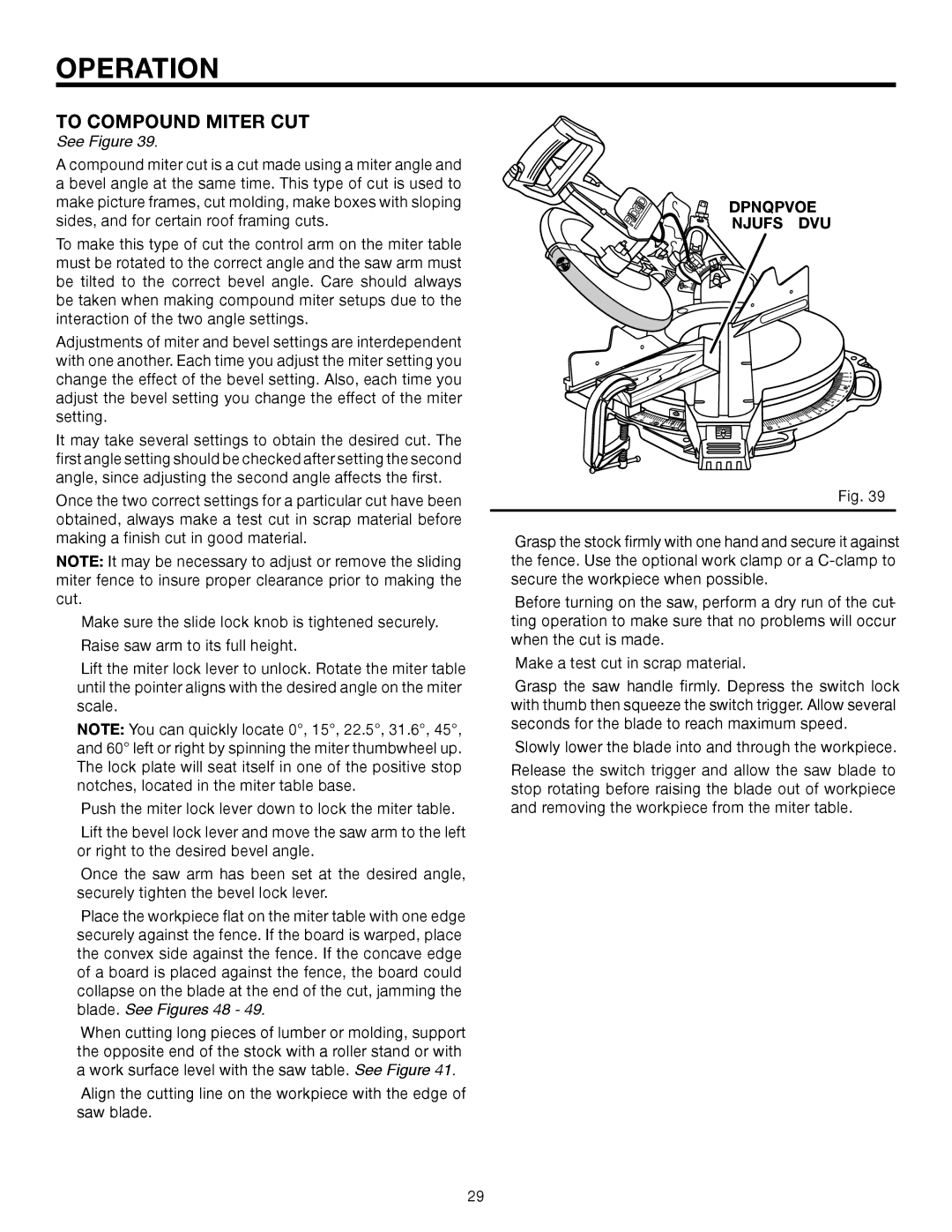MS1290LZ1 specifications
The RIDGID MS1290LZ1 is a powerful miter saw designed for both professional tradespeople and avid DIYers, providing exceptional versatility, precision, and ease of use. With its robust features and innovative technologies, this miter saw stands out in the crowded market of power tools.One of the standout features of the MS1290LZ1 is its powerful 15-amp motor, which generates an impressive 4,000 RPM. This high-speed operation allows for quick and clean cuts through various materials, including hardwood, softwood, and composites. Capable of making both bevel and miter cuts, the saw offers a cutting capacity of up to 12 inches, making it suitable for a range of applications, from framing to crown molding.
The MS1290LZ1 is equipped with a dual bevel system, allowing users to make beveled cuts to the left and right with ease. This means that operators can achieve precise angles without the need to flip or reposition their workpieces, significantly enhancing efficiency. The saw features a generous cutting capacity of 0 to 50 degrees for miter cuts on both sides, enabling a wide variety of projects with intricate angles.
Another notable characteristic of this miter saw is its advanced laser guide system. This technology projects an accurate line of cut directly onto the material, ensuring maximum precision. The adjustable laser can be aligned with the blade for improved accuracy, reducing the likelihood of errors. Additionally, the MS1290LZ1 includes a built-in work light that illuminates the cutting area, providing visibility in low-light environments.
The saw's ergonomic design enhances user comfort during operation. Equipped with a sturdy and lightweight chassis, the MS1290LZ1 is easy to transport, making it an excellent choice for on-site jobs. The handle features a comfortable grip, allowing for extended use without causing fatigue. Moreover, the saw includes a dust collection port that helps maintain a clean workspace by minimizing sawdust and debris.
In conclusion, the RIDGID MS1290LZ1 miter saw combines power, precision, and user-friendly features, making it an ideal tool for both novice and experienced users. With its powerful motor, dual bevel capabilities, advanced laser guide, and ergonomic design, this miter saw offers the versatility and performance needed to tackle any cutting task with confidence. Whether you're framing a house, crafting custom furniture, or working on detailed trim, the MS1290LZ1 is equipped to handle the job efficiently and accurately.

